And all because of the soft close! Where and why have we become so lazy that we need a drawer to pull itself in that last 30mm..!Absolutely.
Derek's stuff is of course immaculate but not to lose sight of the fact that even ordinary trad furniture at the cheap end of the scale, with speedily hacked out irregular dovetails, cheap materials, has quality and will outlast most modern garbage.
Just a detail - one odd thing about the modern amateur is the reliance on expensive bought drawer runners. Trad solid wood runner design is easy to implement, costs nothing (just offcuts usually), works well and lasts for years.
Bring back the traditional drawer runner!
You are using an out of date browser. It may not display this or other websites correctly.
You should upgrade or use an alternative browser.
You should upgrade or use an alternative browser.
So this Dovetailing business?...
- Thread starter Kaizen123
- Start date

Help Support UKworkshop.co.uk:
This site may earn a commission from merchant affiliate
links, including eBay, Amazon, and others.
thetyreman
Established Member
I would be very interested in seeing a photo of your dovetail template if you are happy posting one
here you go, it's the same one as paul sellers uses.
Attachments
here you go, it's the same one as paul sellers uses.
@thetyreman
Thank you.
I'll post images of mine in the next few days when I'm back on my computer.
here you go, it's the same one as paul sellers uses.
ditto. Dead easy to make, surprisingly hard to make acccurately, at least it was for me.
Attachments
JobandKnock
Amateur curmudgeon
Sounds like the one I have that used to be made by Collett Engineers. The "fingers" are brass and removeable:They do come in handy. Kingshot got one from an English source that is to die for. It was made of naval brass and had interchangeable templates for your various angles.

The other nice one was the Richard Kell solid brass jobbie:

I'd like one of those, but Santa has never dropped one off so far - maybe next year?
Derek Cohen (Perth Oz)
Established Member
I have a few I made out of brass angle (from 5:1 through 8:1) ..
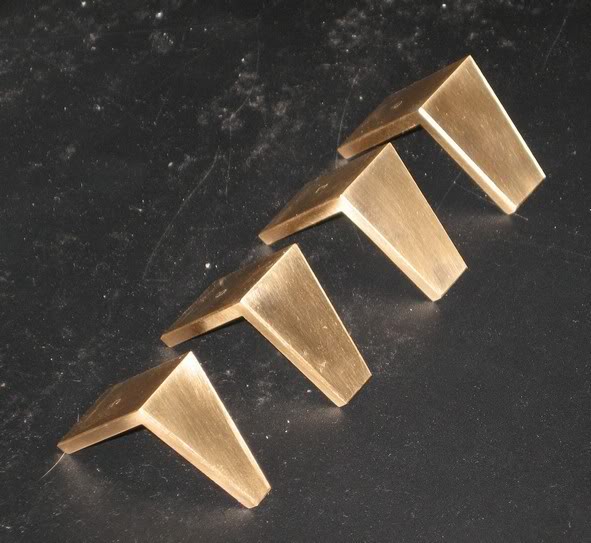
These have the important advantage of running square across the top.
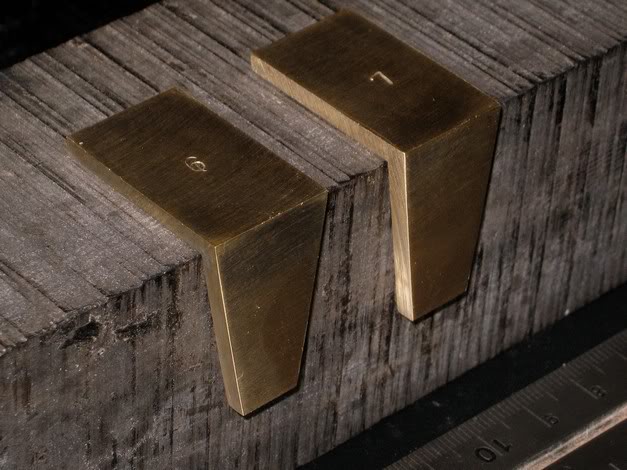
They are also easy to make in clear perspex (use superglue to stick together) ...
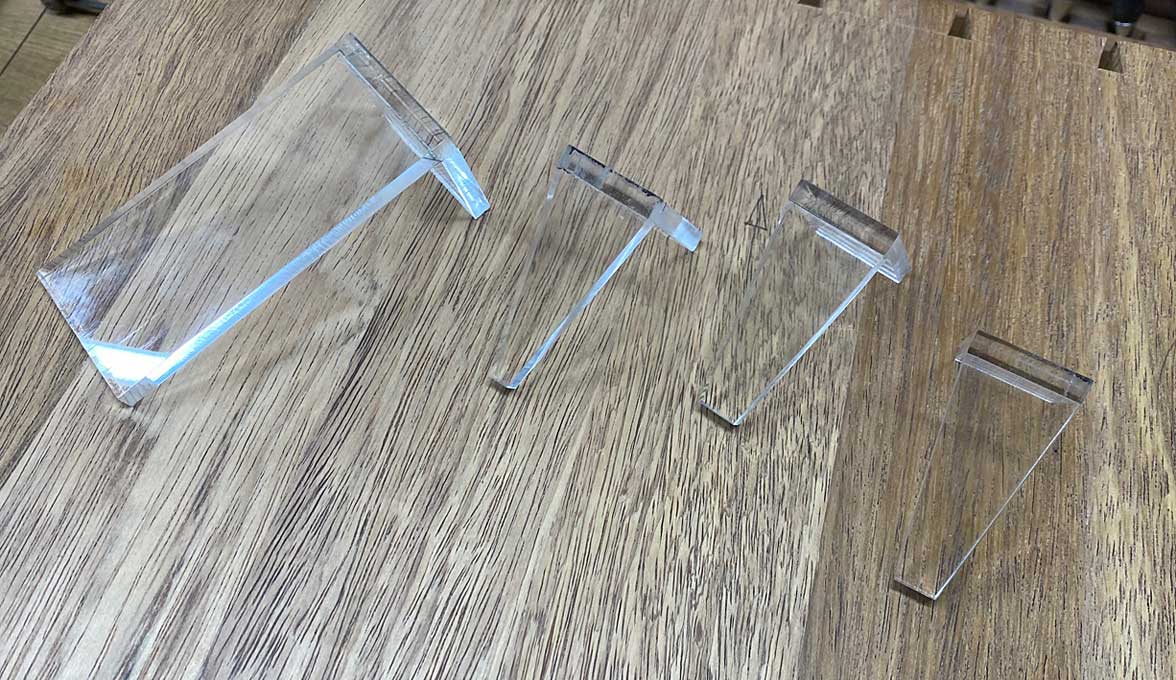
A small sliding bevel works best on the outside marking at the end of the board ..

That is a nice, pretty Vesper bevel, but these Stanleys are also great ...
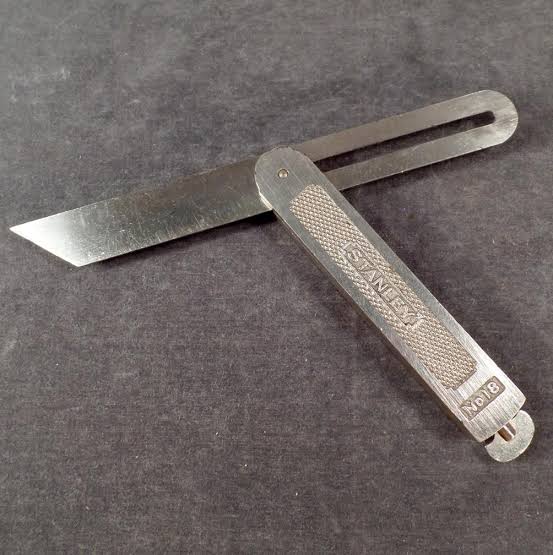
Here is a complete kit, one I take to Woodshows or workshop demonstrations of joinery. Much of these I either made or purchased used on eBay ...
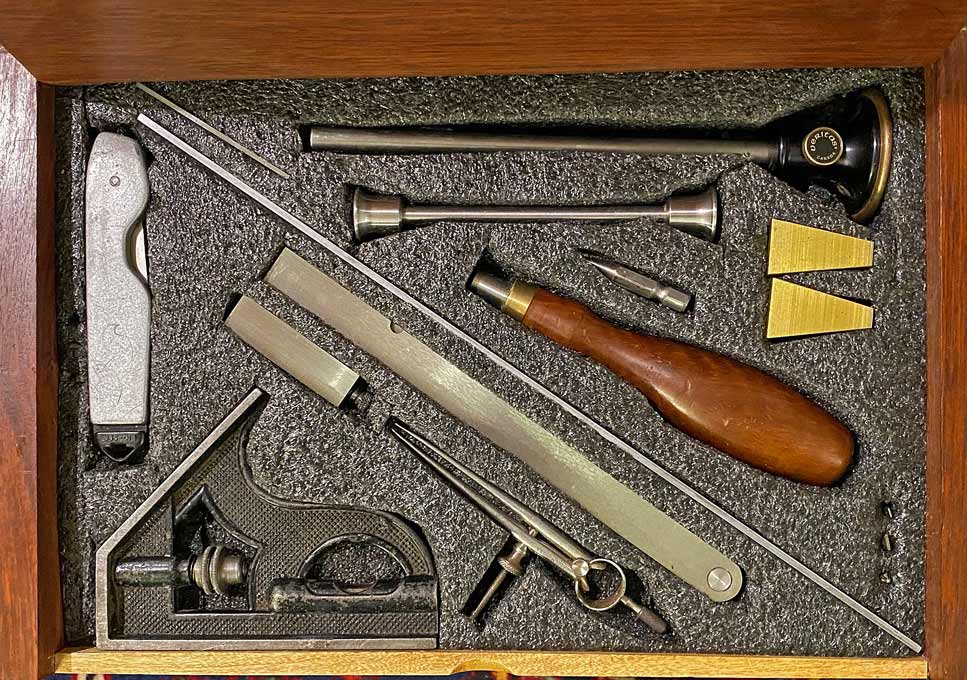
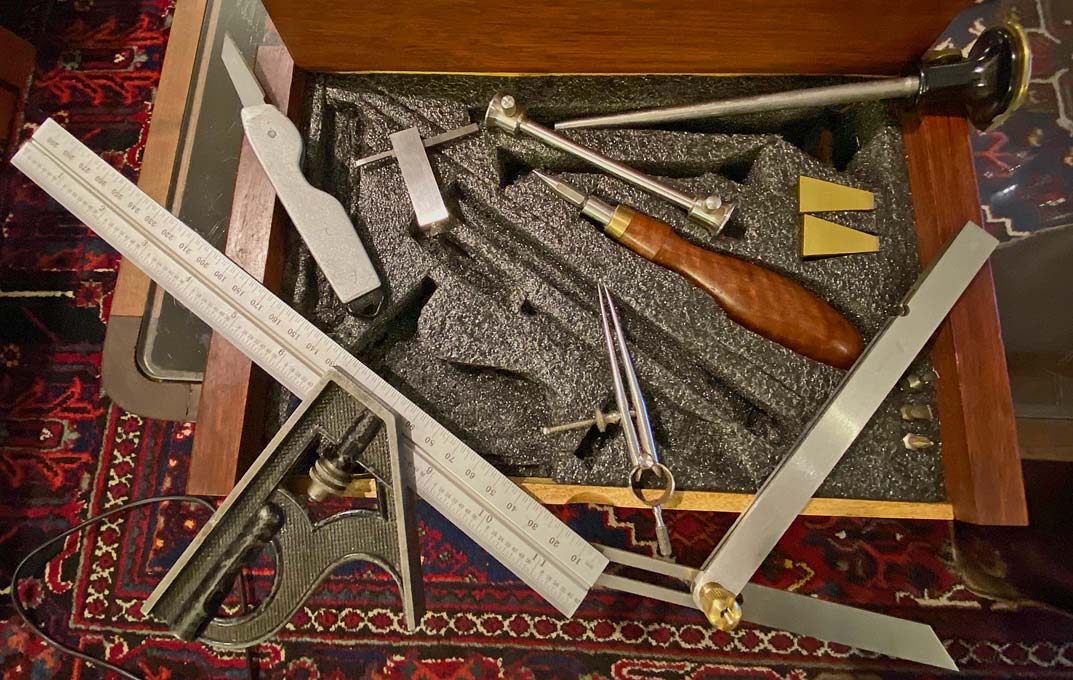
Stanley knife for scoring, Starrett 12"/300mm combo square, Starrett mini double square, Starrett small dividers, Shinwa sliding bevel, Veritas cutting gauges (mini and full size), dovetail gauges (5:1 and 7:1), and a driver holder with three driver bits and an awl.
Regards from Perth
Derek

These have the important advantage of running square across the top.

They are also easy to make in clear perspex (use superglue to stick together) ...

A small sliding bevel works best on the outside marking at the end of the board ..

That is a nice, pretty Vesper bevel, but these Stanleys are also great ...

Here is a complete kit, one I take to Woodshows or workshop demonstrations of joinery. Much of these I either made or purchased used on eBay ...


Stanley knife for scoring, Starrett 12"/300mm combo square, Starrett mini double square, Starrett small dividers, Shinwa sliding bevel, Veritas cutting gauges (mini and full size), dovetail gauges (5:1 and 7:1), and a driver holder with three driver bits and an awl.
Regards from Perth
Derek
Last edited:

£17.99 (£1.80 / count)
£27.44 (£2.74 / count)
3M 8822 Disposable-fine dust mask FFP2 (10-pack)
Amazon.co.uk

£19.46 (£3.89 / count)
£19.99 (£4.00 / count)
Stealth Lite Pro FFP3 Face Masks UK Certified Dust Mask. 99.99% particle filtration, air filter reusable face mask. FFP3 Mask -7 day use per Construction, Woodworking, DIY and Welding Mask
Amazon.co.uk

£26.99 (£1.35 / count)
VEVOX® FFP2 Dust Mask - Set of 20 - Valved Face Masks - Respirator - Protection e.g. for Construction, Building Work, Sanding, Woodworking, Fine Dusts, Aersoles or Particles
SLSK Ventures GmbH (UK)

£12.50 (£1.25 / count)
£14.45 (£1.44 / count)
JSP M632 FFP3moulded Disposable Dustmask (Box of 10) One Size suitable for Construction, DIY, Industrial, Sanding, dust protection 99 Percent particle filtration Conforms and Complies to EN 149
Amazon.co.uk
@jcassidy .ditto. Dead easy to make, surprisingly hard to make acccurately, at least it was for me.
Thank you. I found the same with the two templates I made. (Coming soon)
Sounds like the one I have that used to be made by Collett Engineers. The "fingers" are brass and removeable:
View attachment 127438
The other nice one was the Richard Kell solid brass jobbie:
View attachment 127426
I'd like one of those, but Santa has never dropped one off so far - maybe next year?
@JobandKnock .
Thank you.
@Derek Cohen (Perth Oz) ,I have a few I made out of brass angle (from 5:1 through 8:1) ..

These have the important advantage of running square across the top.

They are also easy to make in clear perspex (use superglue to stick together) ...

A small sliding bevel works best on the outside marking at the end of the board ..

That is a nice, pretty Vesper bevel, but these Stanleys are also great ...

Here is a complete kit, one I take to Woodshows or workshop demonstrations of joinery. Much of these I either made or purchased used on eBay ...


Stanley knife for scoring, Starrett 12"/300mm combo square, Starrett mini double square, Starrett small dividers, Shinwa sliding bevel, Veritas cutting gauges (mini and full size), dovetail gauges (5:1 and 7:1), and a driver holder with three driver bits and an awl.
Regards from Perth
Derek
Thank you.
Jameshow
Established Member
I like the veritas ones not too expensive but good.
https://www.toolnut.co.uk/products/...e&utm_medium=cpc&utm_campaign=google+shoppingCheers James
https://www.toolnut.co.uk/products/...e&utm_medium=cpc&utm_campaign=google+shoppingCheers James
Jacob
What goes around comes around.
I don't see the point of them at all.
You can do it freehand with no guide at all, after a bit of practice.
If you need a guide then a general purpose sliding bevel does it perfectly - and gives you a choice other than 1:6, 1:8, which have been chosen for no good reason as somehow "correct".
Or if needed I could knock one up from a few scraps in a minute or so.
You can do it freehand with no guide at all, after a bit of practice.
If you need a guide then a general purpose sliding bevel does it perfectly - and gives you a choice other than 1:6, 1:8, which have been chosen for no good reason as somehow "correct".
Or if needed I could knock one up from a few scraps in a minute or so.
Jacob
What goes around comes around.
And if you turn it left to right, or up and over, it works just as well on all of them......
A small sliding bevel works best on the outside marking at the end of the board ..
......
All you need, if you really don't want to do it the "correct" way i.e. freehand - just as "correct" as any of the other notional values said to be correct.
There are many things in the world of tools that aren't essential but having a tool specific to a single task can be a real joy and lead to more enjoyment of the task.I don't see the point of them at all.
You can do it freehand with no guide at all, after a bit of practice.
If you need a guide then a general purpose sliding bevel does it perfectly - and gives you a choice other than 1:6, 1:8, which have been chosen for no good reason as somehow "correct".
Or if needed I could knock one up from a few scraps in a minute or so.
I have a wooden one that I got from Rob Cosman back in 2000 when he was teaching dovetails in Ottawa. Im was 100% eyeball before that and it showed
I always fall in to the dovetailing frame of mind when I get it out of the drawer. Tools can be much more than the physical thing they are.
I always fall in to the dovetailing frame of mind when I get it out of the drawer. Tools can be much more than the physical thing they are.
Exactly. I would never buy a gadget 'cos the sliding bevel is the tool for the job, but making some templates was challenging given my poor saw habits, and using them is a joy because it's mine and I made it. And it used up some scraps too.
Jacob
What goes around comes around.
Did they use them in the good old days? Do they turn up in old tool collections or catalogues?
JobandKnock
Amateur curmudgeon
For want of a better term, "eye candy"Can I ask why brass? Looks or does it have some kind of practical application?
1:6 and 1:8 were being taught at City & Guilds as far back as the 1920s - so before even your time. No idea exactly where they came from. I was taught to use a sliding bevel. Mine happens to have been an unsolicited, unbidden present from a customer. No idea why, TBHI don't see the point of them at all.
You can do it freehand with no guide at all, after a bit of practice.
If you need a guide then a general purpose sliding bevel does it perfectly - and gives you a choice other than 1:6, 1:8, which have been chosen for no good reason as somehow "correct".
Of course not, well not yet. Give it time...Did they use them in the good old days? Do they turn up in old tool collections or catalogues?
Last edited:
@Jameshow .I like the veritas ones not too expensive but good.
https://www.toolnut.co.uk/products/...e&utm_medium=cpc&utm_campaign=google+shoppingCheers James
Thank you
Similar threads
- Replies
- 42
- Views
- 4K































